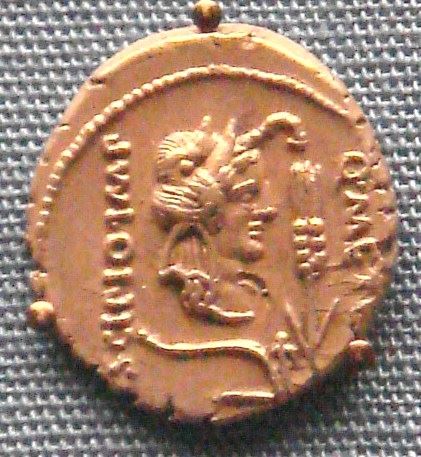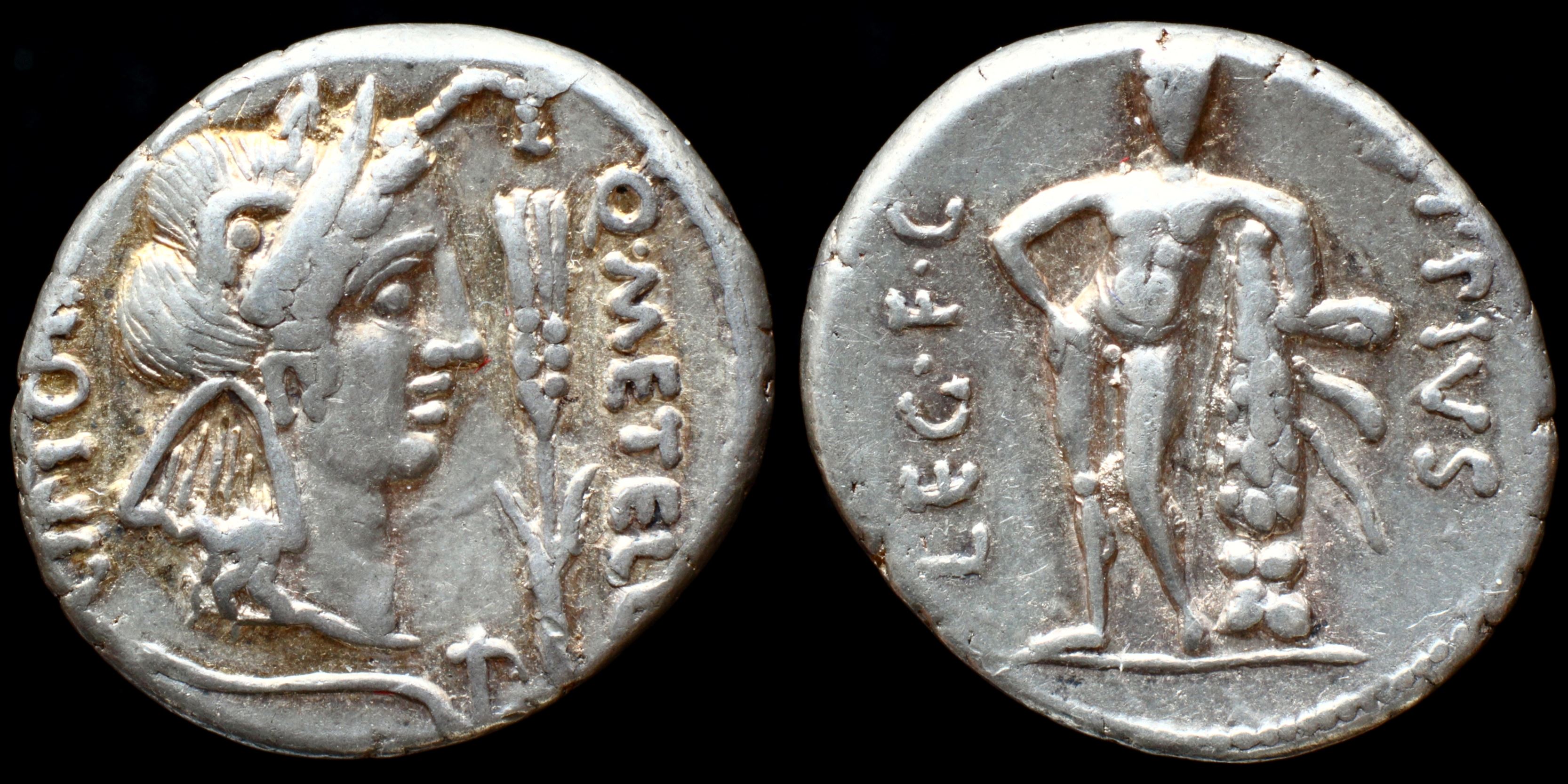Quintus Caecilius Metellus Pius Cornelianus Scipio Nasica was a Roman consul and military commander in the Late Republic.
During the civil war between Julius Caesar and the senatorial faction led by Pompeius Magnus ("Pompey the Great"), he remained a staunch optimate.
He led troops against Caesar's forces, mainly in the battles of Pharsalus and Thapsus, where he was defeated. He later committed suicide.
During the civil war between Julius Caesar and the senatorial faction led by Pompeius Magnus ("Pompey the Great"), he remained a staunch optimate.
He led troops against Caesar's forces, mainly in the battles of Pharsalus and Thapsus, where he was defeated. He later committed suicide.


Obverse: head of Africa right, laureate and clad in elephant scalp, stalk of grain right, plough below; Q·METELL__SCIPIO·IMP
Reverse: naked Herakles facing, leaning on club set on rock draped with lion's skin; EPPIVS__LEG·F·C
Diameter:
17.5 mm
Die Orientation: -
Weight: 3.8 g
Die Orientation: -
Weight: 3.8 g
No notes for this coin
Crawford 461/1, SRCV I 1380/1 (large Africa head), BMCRR Africa 10 (same), RSC I Caecilia 50, Sear CRI 44, Sydenham 1051
.jpg)
Obverse: G T A above, Q METEL PIVS right, SCIPIO IMP left, the Genius of Africa (Sekhmet the lion-headed Egyptian goddess) standing facing, holding ankh in right hand
Reverse: P CRASSVS IVN right, LEG PRO P R left - Victory standing left, holding winged caduceus in right hand, small round shield in left
Diameter:
18 mm
Die Orientation: 12 H
Weight: 3.15 g
Die Orientation: 12 H
Weight: 3.15 g
Quintus Caecilius Metellus Pius Cornelianus Scipio Nasica (yea his full name was that ridiculous) as Imperator and Publius Crassus Junianus as Legatus Pro Praetore
During the civil war between Julius Caesar and the senatorial faction led by Pompeius Magnus ("Pompey the Great"), Scipio remained a staunch optimate. He led troops against Caesar's forces, mainly in the battles of Pharsalus and Thapsus, where he was defeated. He later committed suicide. Ronald Syme called him "the last Scipio of any consequence in Roman history."
Roma Numismatics Limited has put forward the thought that it is Tanit in leontocephalic form instead of "Genius of Africa" and the "ankh" is rather the linear female abstract symbol for Tanit. I agree with the rationality behind this, because it looks everything like that symbol and nothing like an anhk, but include the standard attributions as we know them.
During the civil war between Julius Caesar and the senatorial faction led by Pompeius Magnus ("Pompey the Great"), Scipio remained a staunch optimate. He led troops against Caesar's forces, mainly in the battles of Pharsalus and Thapsus, where he was defeated. He later committed suicide. Ronald Syme called him "the last Scipio of any consequence in Roman history."
Roma Numismatics Limited has put forward the thought that it is Tanit in leontocephalic form instead of "Genius of Africa" and the "ankh" is rather the linear female abstract symbol for Tanit. I agree with the rationality behind this, because it looks everything like that symbol and nothing like an anhk, but include the standard attributions as we know them.
RSC Caecilia 51
